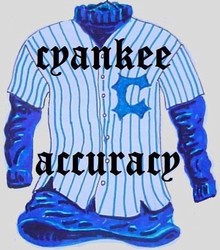Bill Calfee
Gun Fool
Controlling initial retardation....skill or luck?
CYA accuracy fool friends:
Is controlling initial retardation skill or luck?
It's both...........
There's one thing for positive, if you can't control the initial retardation, either by skill or luck, you aren't going to produce numbers big enough to win Big National Championships...
You may have the finest ammo and contraption, but without controlling initial retardation you aren't going to win......
So what is meant by "skill or luck"?
This is going to take awhile......
More later.....
Your LBK and pistol fool friend, Bill Calfee
CYA accuracy fool friends:
Is controlling initial retardation skill or luck?
It's both...........
There's one thing for positive, if you can't control the initial retardation, either by skill or luck, you aren't going to produce numbers big enough to win Big National Championships...
You may have the finest ammo and contraption, but without controlling initial retardation you aren't going to win......
So what is meant by "skill or luck"?
This is going to take awhile......
More later.....
Your LBK and pistol fool friend, Bill Calfee
Last edited:

